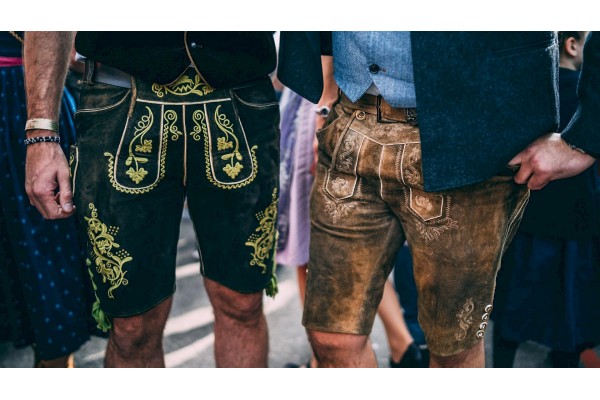
"The History and Cultural Significance of Lederhosen: A Deep Dive into Traditional Bavarian Attire"
09/07/2023 | Lisa
Introduction: Lederhosen, the iconic leather shorts worn primarily in Bavaria, Germany, have a rich history and cultural significance that extends beyond their association with Oktoberfest. These traditional garments have deep roots in Bavarian heritage and serve as symbols of identity, craftsmanship, and community. In this blog post, we will take a deep dive into the history and cultural significance of lederhosen, exploring their origins, evolution, and enduring popularity.
- The Origins of Lederhosen:
- Early Utilitarian Garments: Lederhosen trace their origins back to the 18th century when they were primarily worn by laborers, farmers, and hunters in the Alpine regions of Bavaria and Austria.
- Durable and Practical: Made from sturdy leather, lederhosen were designed to withstand the demands of outdoor work and provide protection in rugged terrain.
- Influences from Germanic and Alpine Cultures: Lederhosen's design and construction show influences from both Germanic and Alpine cultures, blending functional features with regional aesthetics.
- Evolution and Styles of Lederhosen:
- The Impact of Industrialization: With the advent of industrialization in the 19th century, lederhosen evolved from a work garment to a symbol of rural pride and cultural identity.
- Traditional Styles: Explore the different styles of lederhosen, such as the Kniebundhosen (knee-length) and Kurze Lederhosen (short-length), and their distinct characteristics and usage.
- Decorative Elements: Discover the intricate embroidery, metal clasps (Hosenträger), and decorative stitching that add flair and personalization to lederhosen, making them unique to each wearer.
- Lederhosen in Bavarian Culture:
- Festivals and Celebrations: Oktoberfest, the world-famous beer festival, plays a significant role in popularizing lederhosen, but they are also worn in other Bavarian festivals and celebrations, emphasizing regional pride and solidarity.
- Traditional Associations: Explore how lederhosen became synonymous with Bavarian culture, representing values such as hard work, tradition, and a connection to nature.
- Community and Folklore: Lederhosen often signify belonging to a community or a traditional dance group (Trachtenverein), promoting camaraderie and preserving cultural customs.
- Lederhosen Today:
- Fashion and Global Influence: Lederhosen have transcended their traditional origins and found their place in contemporary fashion. They have gained popularity worldwide as a trendy and distinctive style choice.
- Modern Interpretations: Discover how designers and fashion houses have reimagined lederhosen, incorporating them into high-end collections, streetwear, and even women's fashion, offering versatility and adapting to current trends.
- Sustainability and Craftsmanship: Explore the craftsmanship behind authentic lederhosen and the growing emphasis on sustainability, with some artisans using organic or locally sourced materials to create these enduring garments.
Conclusion: Lederhosen, with their deep historical roots and cultural significance, continue to be cherished symbols of Bavarian heritage. From their humble origins as work attire to their prominent presence in festivals and fashion today, lederhosen exemplify tradition, craftsmanship, and a sense of community. By understanding their history and cultural context, we can appreciate the enduring appeal of lederhosen and their role in preserving and celebrating cultural identity.
